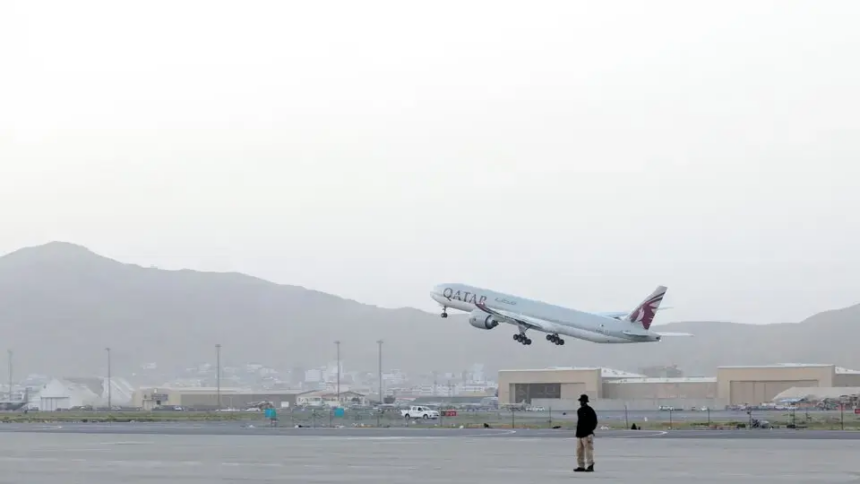RASC News Agency: Following Iranian missile strikes on Israel and the potential for retaliatory attacks from Tel Aviv, the number of international flights passing through Afghanistan airspace has surged. Data from “Flightradar24” reveals that on Thursday, 191 flights traversed Afghanistan’s skies a record number since the Taliban’s return to power.
Airlines are now paying $700 per flight to the Taliban’s Ministry of Aviation, providing the regime with a substantial and growing revenue stream. Afghanistan airspace had been largely closed to international flights after the Taliban’s takeover in August 2021, driven by both security concerns and efforts to deprive the regime of international financial resources. However, flights over Afghanistan have surged following the Hamas attacks on Israel on October 7th, the subsequent conflict in Gaza, and escalating tensions in the Middle East. Data from “Flightradar24” shows that in the second week of August, the number of flights passing through Afghanistan airspace increased more than sevenfold compared to August 2023.
This trend intensified following Iran’s recent missile attacks on Israel, prompting numerous airlines to abandon their traditional Europe-to-Asia routes via Iranian airspace. “Flightradar24” data indicates that an average of 147 flights per day crossed Afghanistan’s airspace between September 19 and 30. This figure excludes flights originating from or destined for Afghanistan itself. Based on this traffic, the Taliban regime is projected to earn approximately $37 million annually from overflights. On Tuesday, following Iran’s missile attacks, the number of flights over Afghanistan rose by 20% to 171, and by Thursday, the figure reached 191 flights the highest daily total since the Taliban seized power. Among the airlines resuming use of Afghanistan airspace are Swiss Air, Finnair, Singapore Airlines, British Airways, and Lufthansa.
A “Flightradar24” spokesperson told “The Independent”: “We are observing aircraft that typically traversed Iranian airspace now opting to fly over Afghanistan. With increasing restrictions in Middle Eastern airspace, airlines are balancing risk assessments with selecting the most viable routes.” Anant Mishra, a visiting scholar at the International Centre for Policing and Security at the University of South Wales, noted that airlines, especially in the West, have received thousands of requests from pilots to avoid Iranian and Syrian airspace. Consequently, many airlines have resorted to using Afghanistan’s air corridor, which is considered relatively safer.
Although the fees paid by airlines are modest, the Taliban’s total revenue remains relatively small. World Bank estimates suggest the Taliban’s total revenue between March and August this year amounted to 90.6 billion kabuli rupees (roughly $1.3 billion). If flight traffic continues at Thursday’s pace, annual revenue from airspace fees could reach around $50 million. Kabir Taneja, a researcher at the Observer Research Foundation in New Delhi, noted that flights passing through Afghanistan airspace at 35,000 feet are relatively safe from surface-to-air missile threats. He also emphasized that despite possessing some leftover U.S. weaponry, terrorist groups in Afghanistan lack the capability to target high-altitude aircraft.
According to the U.S. Federal Aviation Administration (FAA), flights above 32,000 feet in Afghanistan airspace are out of range of such threats, even when launched from mountain peaks. Graeme Smith, a senior analyst at the Crisis Group, commented that the resumption of flights through Afghanistan airspace is a logical decision for many regional routes. He explained: “For airlines, this offers a more direct route, cutting carbon emissions and reducing operational costs.”






